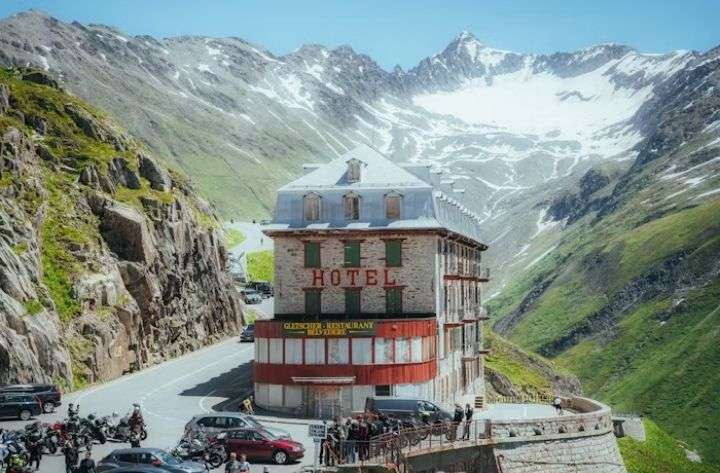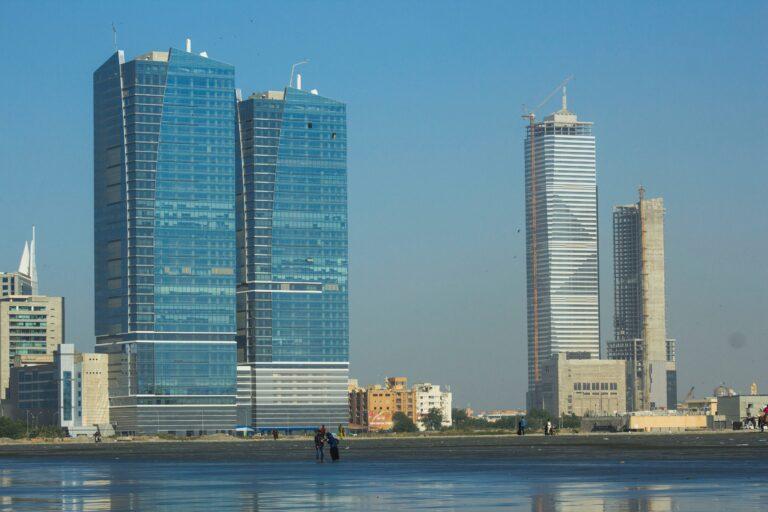Portugal, a charming country nestled on the southwestern edge of Europe, is a land where ancient traditions blend seamlessly with modern living. Known for its rich maritime history, captivating landscapes, and warm, Mediterranean climate, Portugal is a tapestry of cultural and natural beauty.

Contents
- 1 A. Overview of Portugal’s rich history
- 2 B. Importance of castles in preserving history
- 2.1 Castle 1: Guimarães Castle
- 2.2 Castle 2: Pena Palace
- 2.3 Castle 3: Castle of the Moors
- 2.4 Óbidos Castle: A Timeless Jewel in Portugal’s Crown
- 2.5 :Almourol Castle A Sentinel on the Tejo River
- 2.6 Castle 6: Lisbon Castle
- 2.7 Castle 7: Marvão Castle
- 2.8 Leiria Castle: A Timeless Fortress in Portugal
- 2.9 Castle 9: Belmonte Castle
- 2.10 Castle 10: Montemor-o-Velho Castle
- 2.11 Castle 11: Beja Castle
- 2.12 Castle 12: Evoramonte Castle
- 2.13 Castle 13: Sesimbra Castle
- 2.14 Castle 14: Evoramonte Castle: A Unique Landmark in Portuguese History
- 2.15 Castle 15: Alcácer do Sal Castle
- 2.16 Conclusion
- 2.17 Frequently Asked Questions About Portugal Castles:
A. Overview of Portugal’s rich history
https://youtu.be/Ve2w1NNSSgw?si=iWIdFcjkEGcH8UEd
Located on the western edge of the Iberian Peninsula, Portugal unfolds like a time-honored tapestry, woven with threads of conquest, exploration, and resilience. Its history, a mosaic of cultures and epochs, stretches back millennia, leaving an indelible mark on the nation’s character. From the early influences of Celtic and Iberian tribes to the maritime prowess of the Age of Discovery, Portugal’s narrative is a captivating journey through time.
This overview commence on an exploration of Portugal’s dynamic history, traversing the landscapes of medieval castles, the shores where bold explorers set sail, and the echoes of revolutionary moments that shaped the nation.
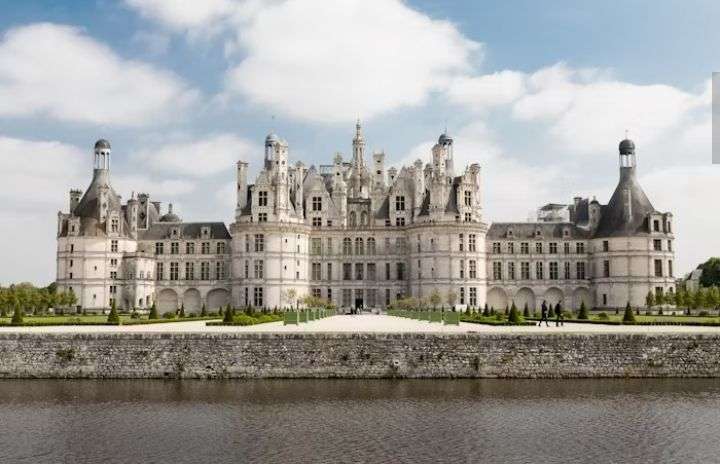
B. Importance of castles in preserving history
Portugal, a country with a history as rich and intricate as the tapestries that adorn its ancient walls, is a land where the past is always present. Among its most treasured historical assets are its castles – silent sentinels that have stood the test of time, guarding the memories of a bygone era. These fortresses, scattered across the lush landscapes and rugged hills, are not just stone structures; they are the embodiment of Portugal’s diverse history, from the Roman occupation to the Age of
Castle 1: Guimarães Castle
Guimarães Castle, located in the northern region of Portugal, is one of the country’s most iconic medieval monuments, often referred to as the birthplace of the Portuguese nation. This imposing structure dates back to the 10th century when it was built to protect the monastery from Moors and Norsemen invasions.

Historical Significance:
Foundation:** The castle was constructed during the reign of Mumadona Dias in the 10th century as a defense against the Moors and Vikings.
-Birthplace of a Nation:It’s commonly known as the birthplace of Portugal because it’s closely associated with the formation of Portuguese identity and the nation-state in the 12th century.
-Battle of São Mamede: The castle played a pivotal role in the Battle of São Mamede in 1128, which was fundamental in establishing Portugal’s independence.
Architectural Features:
-Structure:** Guimarães Castle is a prime example of Romanesque military architecture. It features a central keep, high walls, and eight crenelated towers.
Keep:The 27-meter high keep, known as the Tower of Homage, is a notable feature. Visitors can climb to the top for panoramic views of the city of Guimarães.
Present-Day Importance:
Cultural Symbol:** The castle is a powerful symbol of Portuguese identity and nationalism.
Tourism:It is a popular tourist destination, attracting visitors with its rich history and well-preserved architecture.
UNESCO World Heritage Site:** The historical center of Guimarães, including the castle, was declared a UNESCO World Heritage Site in 2001.
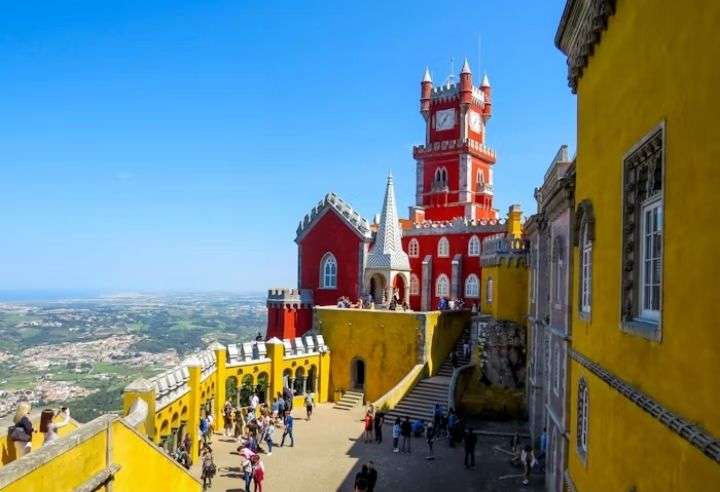
Castle 2: Pena Palace
Pena Palace: A Fairytale Marvel in the Heart of Sintra
Perched atop the Sintra Mountains, Portugal’s Pena Palace is a breathtaking testament to Romanticism and architectural creativity. This whimsical palace, often shrouded in mist, boasts a kaleidoscope of colors and an eclectic blend of architectural styles, making it one of the most enchanting landmarks in the country.
Historical Overview:
– **Construction:** Commissioned by King Ferdinand II, the construction of Pena Palace began in the mid-19th century, with completion in 1854. It stands on the site of a former monastery that was severely damaged in the 1755 earthquake.
-Architectural Fusion:** Pena Palace is a harmonious fusion of various architectural styles, including Romanticism, Neo-Gothic, Neo-Manueline, and Moorish Revival, reflecting the diverse influences of the 19th-century European architectural landscape.
Architectural Features:
Vibrant Colors:** One of the most distinctive features is its vivid color palette. The palace is adorned with terracotta, yellows, blues, and pinks, creating a fairytale-like appearance.
-Moorish Elements:** Intricate tilework, horseshoe arches, and decorative details inspired by Islamic art contribute to the palace’s Moorish influence.
Cultural Significance:
-Royal Residence:** Originally conceived as a summer residence for the Portuguese royal family, Pena Palace served as a retreat for the monarchs.
-Tourist Attraction:Today, it is a UNESCO World Heritage Site and a major tourist attraction, drawing visitors from around the world who are captivated by its fairy-tale allure.
Castle 3: Castle of the Moors

Castle of the Moors: A Sentinel of Sintra’s Past
The Castle of the Moors, perched atop the Sintra hills in Portugal, is a captivating relic of the country’s Islamic heritage. This hilltop fortress, with its rugged walls snaking over the crest of the mountains, offers a window into the medieval era and a panoramic view that encompasses the Atlantic coastline and the surrounding countryside.
Historical Background:
Origins: Dating back to the 8th and 9th centuries, the castle was built during the Moorish occupation of the Iberian Peninsula.
Christian Reconquest: It fell into disuse after the Christian reconquest of Portugal, particularly following the fall of Lisbon in 1147.
Restoration: King Ferdinand II, in the 19th century, undertook a major restoration as part of his romantic vision, which also included the construction of Pena Palace.
Architectural Characteristics:
Ramparts and Towers: The castle’s primary features are its extensive ramparts and towers that once served as watchpoints. They offer a breathtaking, almost aerial view of Sintra.
Moorish Design: Reflecting its Islamic roots, the castle displays characteristics typical of Moorish military architecture, with its meandering walls adapting to the rugged terrain.
Strategic Importance:
Defense Mechanism: The castle’s strategic location was ideal for monitoring the Atlantic coast and the interior lands, serving as a key point in the Moorish defense system.
Cultural Intersection: As a Moorish stronghold in a predominantly Christian region, it symbolizes the historical confluence of different cultures in Portugal.
Castle 4: Óbidos Castle
Óbidos Castle: A Timeless Jewel in Portugal’s Crown
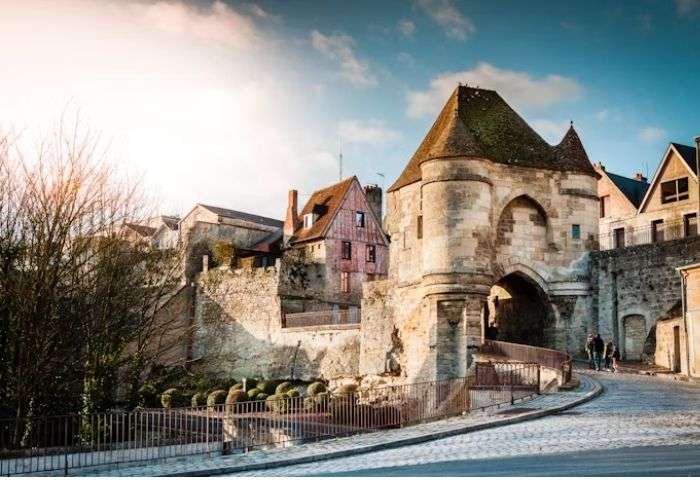
Perched atop a hill overlooking the charming town of Óbidos, Óbidos Castle stands as a captivating testament to Portugal’s medieval heritage. This well-preserved fortress, with its imposing walls and cobbled streets, transports visitors back in time, inviting them to explore its historic corridors and soak in the enchanting atmosphere that permeates this iconic landmark.
Historical Significance:
Moorish Origins: Dating back to the Moorish occupation in the 12th century, Óbidos Castle was strategically positioned to defend the territory during the Reconquista.
Christian Reconquest: Captured by the first king of Portugal, Afonso Henriques, in 1148, the castle played a crucial role in securing the region for the nascent Portuguese kingdom.
Architectural Marvel:
Crenelated Walls and Towers: The castle is characterized by its well-preserved crenelated walls and sturdy towers, offering panoramic views of the surrounding landscape.
Integration with Óbidos Town:
Enchanting Streets: The castle seamlessly merges with the quaint town of Óbidos, where narrow streets, adorned with vibrant bougainvillea and whitewashed houses, create a fairytale setting.
Historic Gates: Passing through the castle’s gates, visitors are welcomed into the heart of Óbidos, a town that has retained its medieval charm through the centuries.
Castle 5: Almourol Castle
:Almourol Castle A Sentinel on the Tejo River
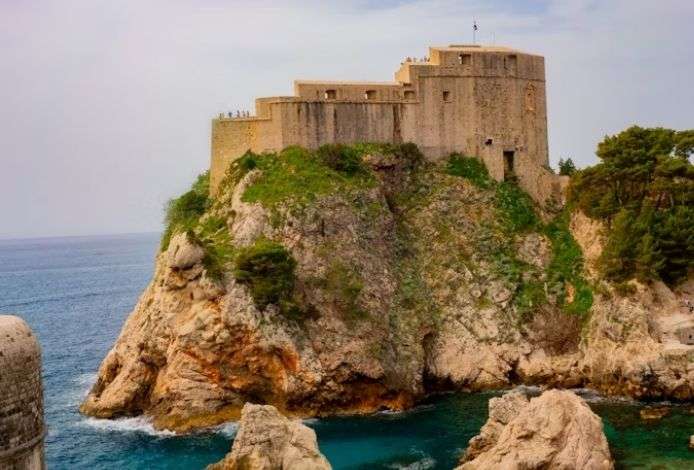
Nestled on a small islet in the middle of the Tagus River, Almourol Castle emerges like a silent guardian, weaving tales of medieval Portugal. This enchanting fortress, with its sturdy stone walls and commanding presence, stands as a testament to the nation’s history, strategically positioned to oversee the river traffic and defend against potential invasions.
Historical Origins:
Islamic Roots: Built during the Islamic rule in the Iberian Peninsula, Almourol Castle was initially part of a defensive line along the Tagus River.
Christian Reconquest: Captured by the Templars in 1129 during the Christian Reconquest, the castle underwent modifications to serve as a stronghold against Moorish incursions.
Architectural Features:
Moorish and Templar Influences: The castle exhibits a unique blend of Moorish and Templar architectural elements, reflecting its dual cultural heritage.
Keep and Battlements: A central keep and crenelated battlements define the castle’s silhouette, showcasing its defensive design.
Strategic Location:
River Defense: Positioned strategically on a small islet, Almourol Castle played a crucial role in controlling river traffic and monitoring the vast Tagus River.
Templar Network: As part of the Templar network, it formed a line of defense against potential invasions, symbolizing the Christian presence in the region.
Castle 6: Lisbon Castle
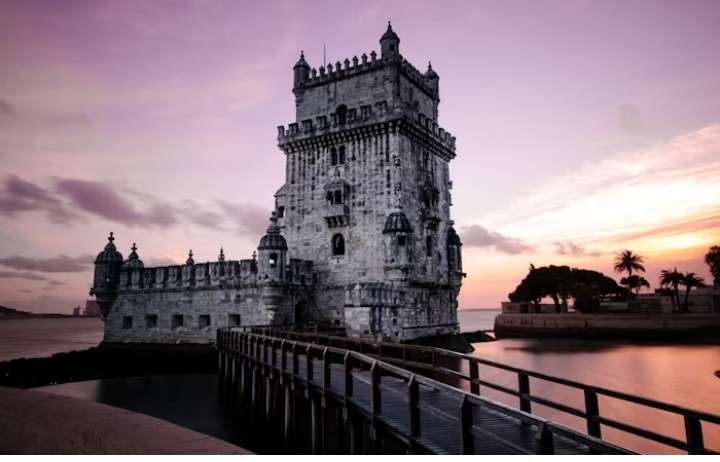
Lisbon Castle: The Storied São Jorge Castle
Perched atop the highest hill in Lisbon, São Jorge Castle (Castelo de São Jorge) is a historic fortress that offers not only panoramic views of the city but also a walk through centuries of Portuguese history. This iconic landmark, with its imposing walls and ancient battlements, stands as a testament to Lisbon’s storied past, inviting visitors to explore its rich heritage.
Historical Tapestry:
Early Foundations: The site of São Jorge Castle has been occupied since at least the 2nd century B.C., with evidence of Roman, Visigothic, and Moorish presence.
Moorish Rule and Reconquest: The castle flourished under Moorish rule and was later taken by King Afonso Henriques in 1147 during the Reconquest, symbolizing a pivotal moment in Portuguese history.
Architectural Grandeur:
Moorish Influences: Reflecting its Moorish past, the castle features characteristic architectural elements like the Umayyad-style arches and defensive structures.
Reconquest Additions: Post-Reconquest, the castle saw significant additions, including royal palaces and military barracks, reflecting its evolving role in Portuguese history.
Strategic Significance:
Military Fortress: Throughout history, São Jorge Castle served as a military fortress, leveraging its strategic position overlooking Lisbon and the Tagus River.
Royal Residence: The castle also functioned as a royal residence until the 16th century, hosting important events in Portugal’s royal history
Castle 7: Marvão Castle
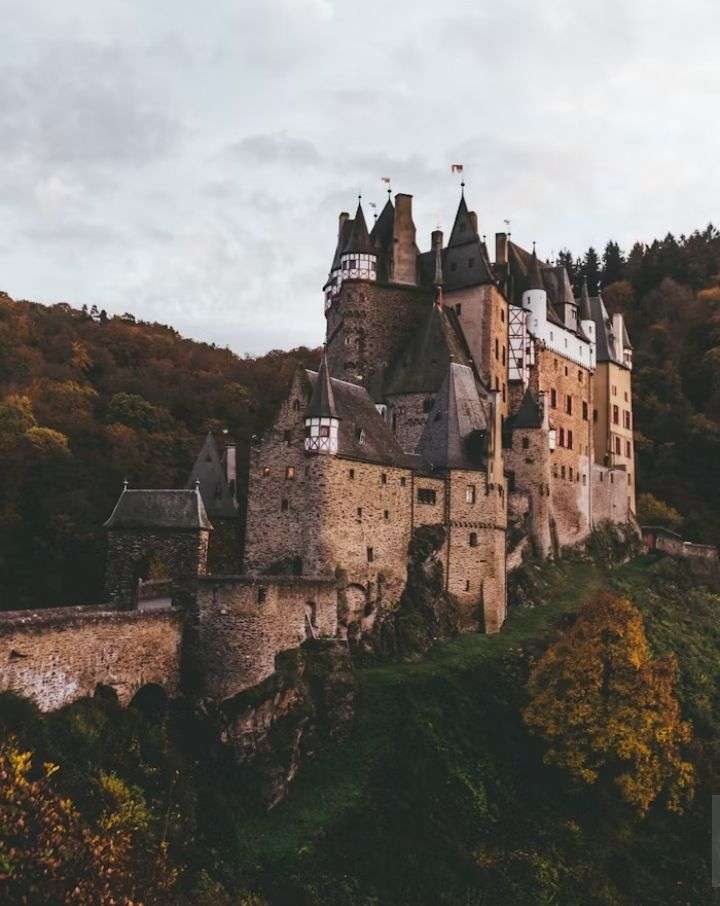
Marvão Castle: A Sentinel in the Sky
High above the rolling hills of the Alentejo region, Marvão Castle stands as a majestic guardian on a craggy peak. This formidable fortress, with its dramatic location and imposing walls, captures the essence of Portugal’s medieval past and offers a glimpse into a history marked by battles, conquests, and strategic significance.
Historical Overview:
Strategic Origins: The origins of Marvão Castle can be traced back to the 8th century, with its strategic position used for military purposes during the Moorish occupation.
Christian Reconquest: The castle played a pivotal role in the Christian Reconquest, serving as a key defensive stronghold on the border with Spain.
Architectural Highlights:
Medieval Design: Reflecting classic medieval architecture, the castle features robust walls, watchtowers, and a distinctively shaped keep.
Adaptive Structures: Over the centuries, the castle has undergone various modifications, adapting to changing defensive needs and architectural styles.
Geographical Significance:
Elevated Position: Perched atop a granite cliff at over 800 meters, the castle offers strategic views over the surrounding countryside, historically serving as a lookout point against invasions.
Natural Defenses: The natural rugged terrain around Marvão provided an additional layer of defense, making it a formidable fortress.
Castle 8: Leiria Castle
Leiria Castle: A Timeless Fortress in Portugal
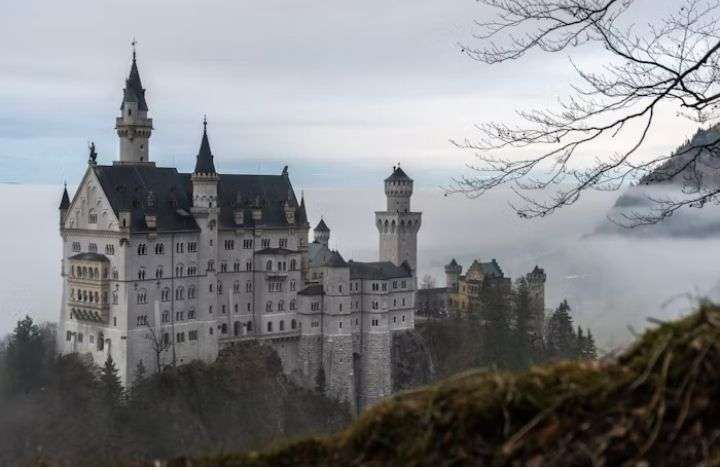
Nestled atop a hill overlooking the charming town of Leiria, Portugal, Leiria Castle stands as a timeless testament to the nation’s history and architectural grandeur.
Historical Significance:
Moorish Origins:
Leiria Castle has roots dating back to the Moorish period when it was originally constructed as a defensive fortress. Its strategic hilltop location provided a vantage point for monitoring the surrounding territory.
Christian Reconquest
The castle played a crucial role during the Christian Reconquest, changing hands between Moorish and Christian forces.
Royal Residence:
Over the centuries, Leiria Castle evolved from a military stronghold into a royal residence.
Architectural Features:
Keep and Towers:
The central keep and towers are prominent features of the castle’s architecture. The keep served as a stronghold and residence for the ruling elite, while the towers provided strategic defense.
Gothic and Manueline Influences:
Leiria Castle showcases a blend of Gothic and Manueline architectural influences. The intricate details in the stonework reflect the artistic trends of the medieval and Renaissance periods.
Cultural Significance:
Medieval Fairs and Events:
Leiria Castle often hosts medieval fairs and historical reenactments, transporting visitors to the bygone eras of knights, troubadours, and courtly festivities.
Art and Exhibitions:
The castle occasionally serves as a venue for art exhibitions and cultural events, fostering a connection between the historical setting and contemporary artistic expression.
Castle 9: Belmonte Castle
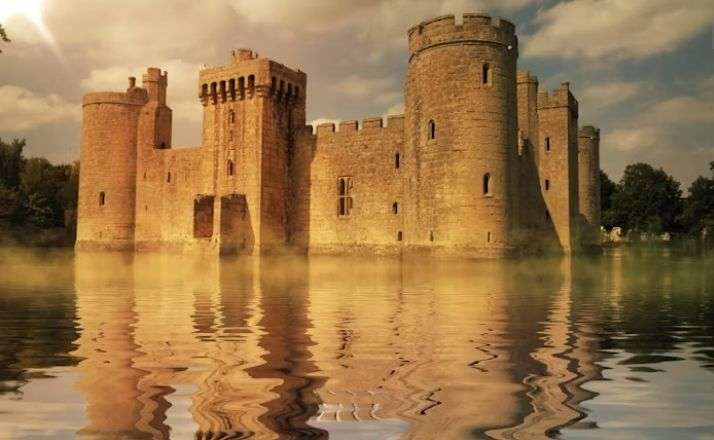
Belmonte Castle: A Testament to Portugal’s Medieval Legacy
Perched atop a picturesque hill in the Beira Baixa region of Portugal, Belmonte Castle stands as a stoic witness to centuries of history.
Strategic Significance:
Strategically positioned, the castle served as a defensive stronghold against invasions. Its hilltop location provided a vantage point, allowing defenders to monitor the surrounding landscape.
Jewish Legacy:
Belmonte is renowned for its connection to the Crypto-Jews, Jews who practiced their faith in secret during the Inquisitive.
Architecture:
Moorish Influence:
Reflecting the architectural influences of the Moorish era, Belmonte Castle exhibits elements like crenellated walls and defensive towers.
Keep and Towers:
The central keep and towers stand as enduring symbols of medieval military architecture.
Cultural Significance:
Crypto-Jewish Museum:
Within the castle grounds, the Crypto-Jewish Museum provides insights into the lives of the Crypto-Jews who sought refuge in Belmonte. Exhibits showcase artifacts and narratives of this historical community.
Castle 10: Montemor-o-Velho Castle
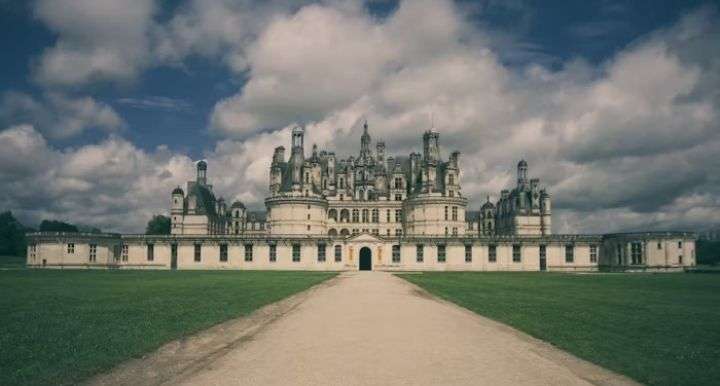
Montemor-o-Velho Castle: A Chronicle of Portuguese History
Nestled on the banks of the Mondego River in central Portugal, the Montemor-o-Velho Castle is a majestic sentinel that has witnessed centuries of history unfold.
History:
Islamic Origins:
The castle’s foundations date back to the Moorish period, reflecting the Islamic influence in the region. It served as a defensive outpost during the Islamic rule of the Iberian Peninsula.
Christian Reconquest:
Montemor-o-Velho played a pivotal role in the Christian Reconquest. As the Moors were gradually pushed southwards, the castle changed hands multiple times, marking a tumultuous era in Portugal’s history.
Architecture:
Moorish and Gothic Elements:
The architecture of Montemor-o-Velho Castle reflects a blend of Moorish and Gothic styles. Massive stone walls, towers, and crenellations contribute to its formidable appearance.
Keep and Towers:
The central keep and towers are integral components of the castle’s structure.
Historical Interpretation Center:
The castle houses a Historical Interpretation Center, providing visitors with an immersive journey through its past. Exhibits showcase artifacts, documents, and multimedia presentations that bring history to life.
Cultural Events:Montemor-o-Velho Castle is a venue for cultural events and reenactments. These events transport visitors to different historical periods, offering a vivid understanding of the castle’s role in shaping Portugal’s destiny.
Castle 11: Beja Castle
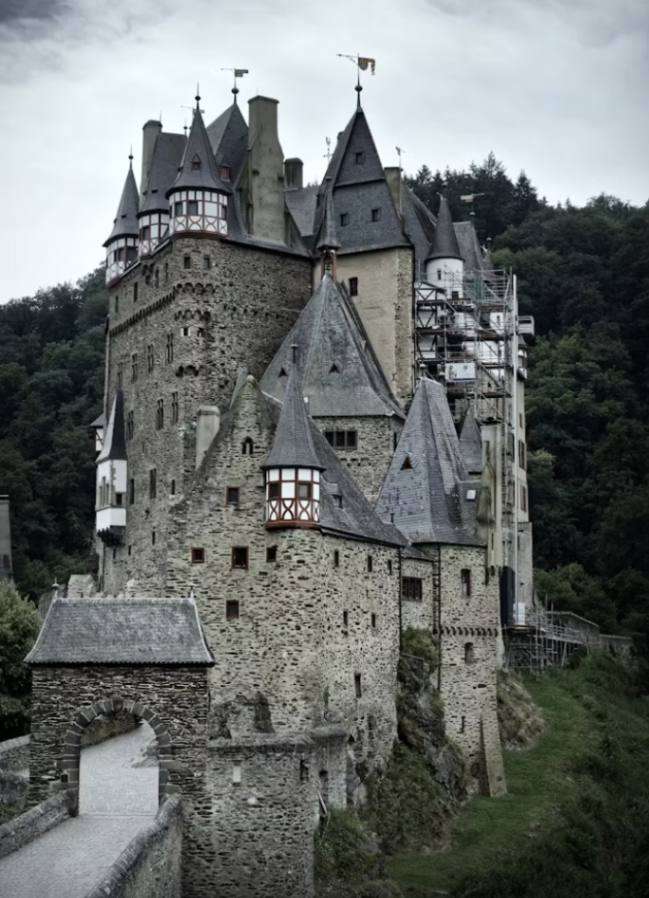
Belmonte Castle: A Testament to Portugal’s Medieval Legacy
Perched atop a picturesque hill in the Beira Baixa region of Portugal, Belmonte Castle stands as a stoic witness to centuries of history. This medieval fortress, with its imposing walls and strategic location, tells tales of battles, cultural exchanges, and the resilience of Portuguese heritage.
History:
Foundation and Reconquista:
Built during the 13th century, Belmonte Castle played a crucial role in the Reconquista, the Christian struggle to reclaim the Iberian Peninsula from Moorish rule.
Strategic Significance:
Strategically positioned, the castle served as a defensive stronghold against invasions. Its hilltop location provided a vantage point, allowing defenders to monitor the surrounding landscape.
Jewish Legacy:
Belmonte is renowned for its connection to the Crypto-Jews, Jews who practiced their faith in secret during the Inquisition. Architecture:
Moorish Influence:
Reflecting the architectural influences of the Moorish era, Belmonte Castle exhibits elements like crenellated walls and defensive towers.
Keep and Towers:
The central keep and towers stand as enduring symbols of medieval military architecture.
Cultural Significance:
Crypto-Jewish Museum:
Within the castle grounds, the Crypto-Jewish Museum provides insights into the lives of the Crypto-Jews who sought refuge in Belmonte.
Preservation Efforts:
Belmonte Castle stands as a testament to Portugal’s commitment to preserving its cultural heritage.
Castle 12: Evoramonte Castle
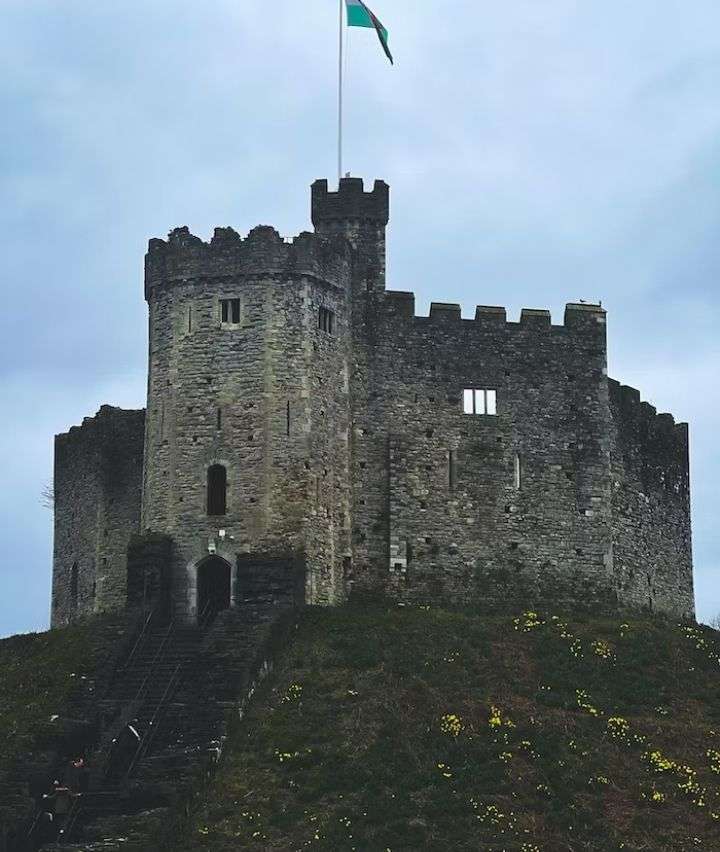
Montemor-o-Velho Castle: A Chronicle of Portuguese History
Nestled on the banks of the Mondego River in central Portugal, the Montemor-o-Velho Castle is a majestic sentinel that has witnessed centuries of history unfold.
History:
Islamic Origins:
The castle’s foundations date back to the Moorish period, reflecting the Islamic influence in the region. It served as a defensive outpost during the Islamic rule of the Iberian Peninsula.
Christian Reconquest:
Montemor-o-Velho played a pivotal role in the Christian Reconquest. As the Moors were gradually pushed southwards, the castle changed hands multiple times, marking a tumultuous era in Portugal’s history.
Architecture:
Moorish and Gothic Elements:
The architecture of Montemor-o-Velho Castle reflects a blend of Moorish and Gothic styles.
Keep and Towers:
The central keep and towers are integral components of the castle’s structure. The towers offer panoramic views of the surrounding countryside, illustrating the castle’s strategic importance.
Cultural Significance:
Historical Interpretation Center:
The castle houses a Historical Interpretation Center, providing visitors with an immersive journey through its past.
Cultural Events:
Montemor-o-Velho Castle is a venue for cultural events and reenactments. These events transport visitors to different historical periods, offering a vivid understanding of the castle’s role in shaping Portugal’s destiny.
Castle 13: Sesimbra Castle
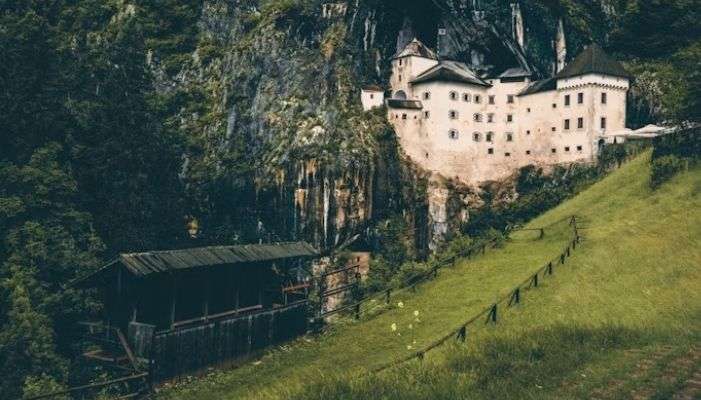
Sesimbra Castle: A Maritime Sentinel of Portuguese History
Sesimbra Castle, strategically located above the charming coastal town of Sesimbra in Portugal, is a historic fortress that has played a crucial role in the country’s maritime defense.
History:
Moorish Beginnings:
The origins of Sesimbra Castle date back to the Moorish occupation of the Iberian Peninsula. It served as a key defensive structure guarding the coastal approaches.
Age of Discoveries:
During Portugal’s Age of Discoveries, Sesimbra Castle played a pivotal role in protecting the kingdom’s maritime interests, safeguarding the coast from pirates and enemy fleets.
Architecture:
Military Design:
The castle’s architecture is primarily military, with robust walls, battlements, and watchtowers designed.
The Keep and Chapel:
The keep, or main tower, is a prominent feature of the castle, offering strategic views.
Cultural Significance:
Symbol of Resilience:
Sesimbra Castle stands as a symbol of Portuguese resilience and strategic ingenuity, particularly during the times of the Reconquest and the maritime explorations.
Heritage Site:
The castle is recognized as a national heritage site, attracting historians and tourists alike.
Castle 14: Evoramonte Castle: A Unique Landmark in Portuguese History
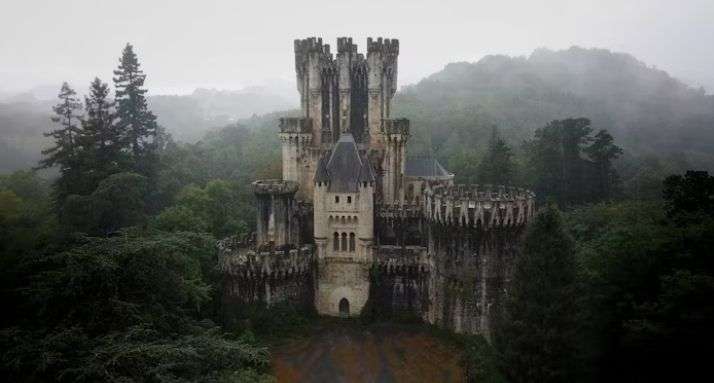
Evoramonte Castle, perched on a lofty hill in the Alentejo region of Portugal, is a distinctive historical monument, blending architectural styles and bearing witness to significant events in Portuguese history. History:
Origins and Construction:
The original castle was constructed in the 12th century, during a turbulent time in Portuguese history marked by the Reconquista, the period when Christian forces were reclaiming territories from Moorish rule.
The 16th Century Reconstruction:
The most significant transformation of Evoramonte Castle occurred in the 16th century under the direction of King João III, who rebuilt it in a unique blend of Gothic and Manueline architectural styles..
Architecture:
Distinctive Circular Towers:
The castle is most notable for its circular towers, a rare feature in Portuguese castles.
Gothic and Manueline Elements:
The blend of Gothic and Manueline styles in its architecture sets Evoramonte Castle apart.
Cultural Significance:
A Symbol of Peace:
The castle’s significance in the Treaty of Evoramonte marks it as a symbol of peace and reconciliation in Portuguese history.
Tourism and Preservation:
Today, Evoramonte Castle is a valued tourist destination. Its preservation as a cultural landmark allows visitors to explore an integral piece of Portugal’s history.
Castle 15: Alcácer do Sal Castle
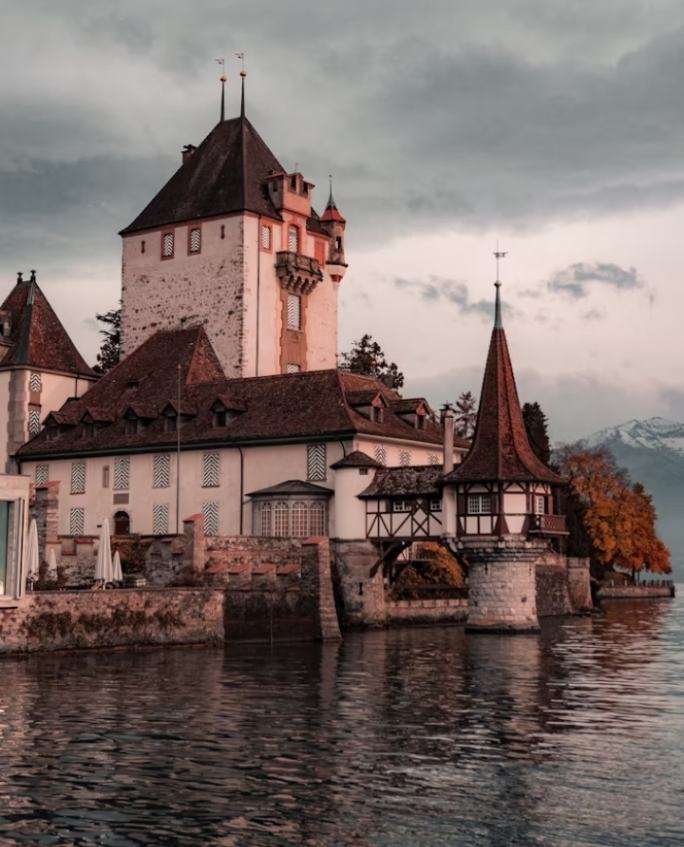
Alcácer do Sal Castle: A Timeless Sentinel Overlooking the Sado River
Nestled on the banks of the serene Sado River in Portugal, the Alcácer do Sal Castle stands as a captivating testament to centuries of history. This ancient fortress, with its commanding views and storied past, paints a vivid picture of Portugal’s resilience, cultural amalgamation, and its enduring
connection to the waterways.
History:
Phoenician and Roman Origins:
The site of Alcácer do Sal has a history dating back to Phoenician and Roman times when it was a vital trading port.
Moorish and Christian Rule:
The castle played a strategic role during the Moorish occupation, witnessing both conflicts and alliances. With the Christian Reconquest, it became a symbol of Portugal’s territorial expansion.
Architecture:
Moorish Influences:
The castle exhibits Moorish architectural influences, notably in its defensive structures and the layout of its tower.
Keep and Battlements:
The central keep and the robust battlements are characteristic features of the castle.
Cultural Significance:
Excavations around the castle have revealed significant archaeological finds, shedding light on the town’s history and its role as a melting pot of different cultures.
Conclusion
Portugal, a land steeped in history and rich cultural tapestry, boasts an array of enchanting castles that echo with the whispers of centuries past. From the strategic hilltops to the riverbanks, each castle stands as a sentinel, guarding tales of conquest, resilience, and the dynamic evolution of Portuguese identity.
Frequently Asked Questions About Portugal Castles:
Q: How many castles are there in Portugal?
A: Portugal boasts over a thousand castles, each with its own unique history and architectural features.
Q: Which castle is the oldest in Portugal?
A: The Castle of Bragança is often considered one of the oldest, with origins dating back to the 12th century.
Q: Are Portugal’s castles open to the public?
A: Many of Portugal’s castles are open to the public, allowing visitors to explore their historical significance and architectural splendor.
Q: Do the castles host events or festivals?
A: Yes, several castles in Portugal host cultural events, medieval fairs, and historical reenactments, offering visitors a chance to step back in time.
Q: What is the significance of riverside castles like Alcácer do Sal?
A: Riverside castles like Alcácer do Sal played a crucial role in overseeing maritime trade routes, contributing to the town’s prosperity and cultural exchange.

Safnaa has been working in the travel industry for over a decade, and her expertise and knowledge are reflected in the high-quality content and resources available on travelstutor.com. She is dedicated to providing travelers with accurate and up-to-date information on destinations, accommodations, transportation, and activities, ensuring that they have the best possible travel experience.


